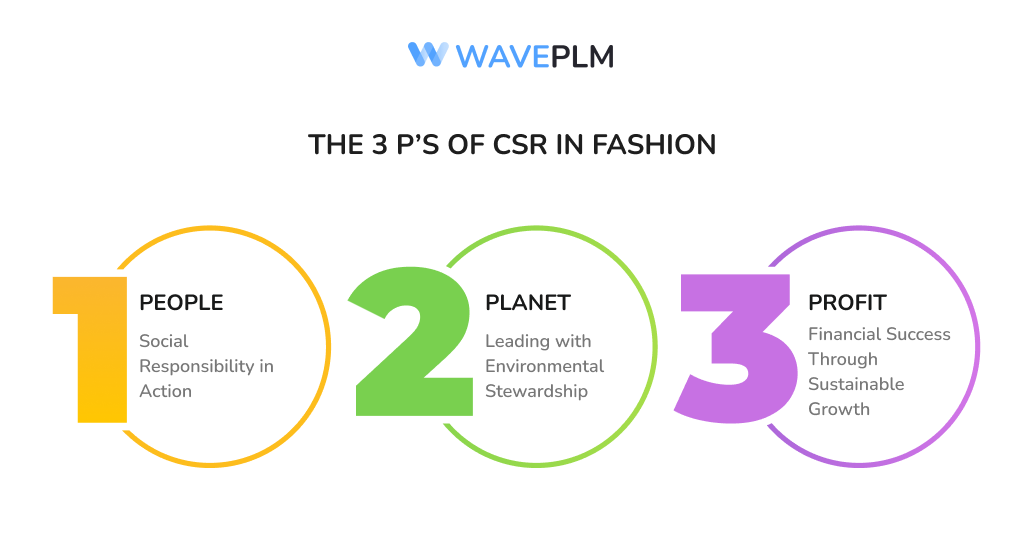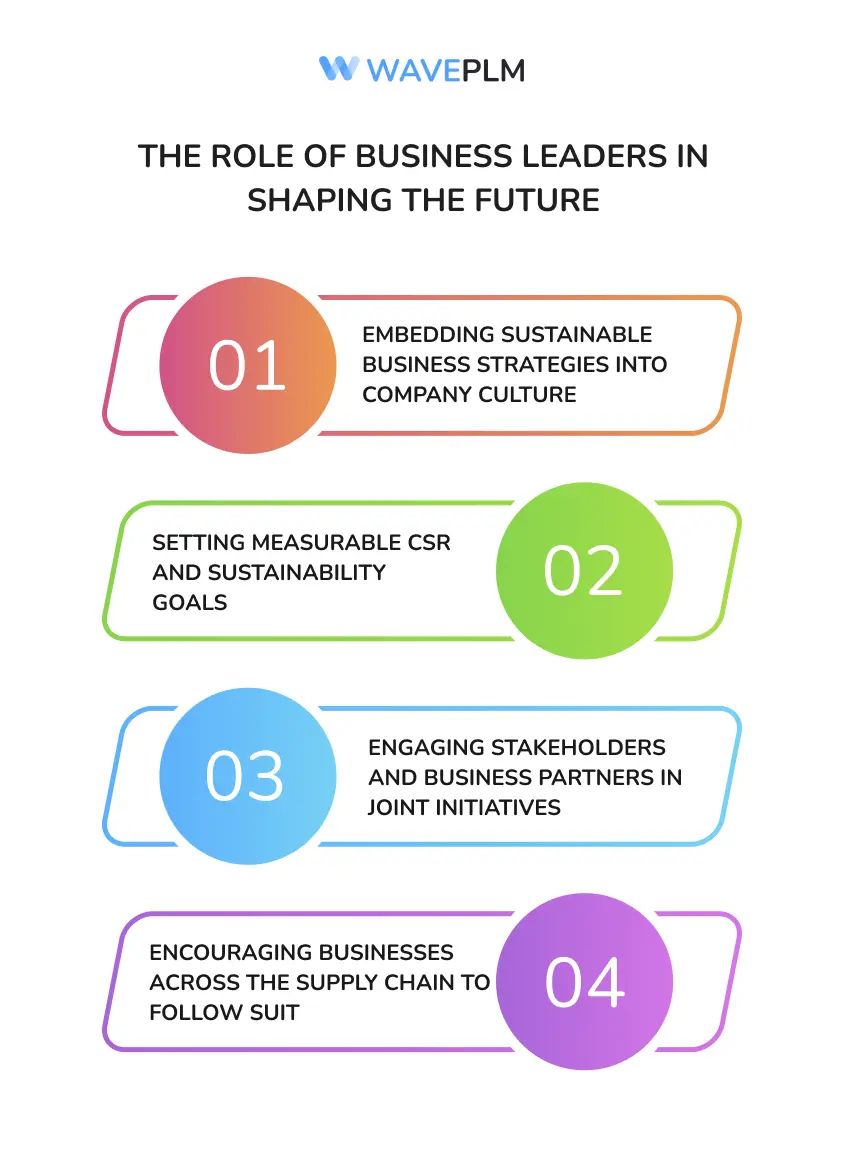
The fashion industry is undergoing a transformation. Gone are the days when profitability alone defined success. Today, brands must demonstrate a deep commitment to people and the planet. This shift is driven by evolving consumer expectations, stricter regulations, and the growing urgency of social and environmental issues. At the core of this change lies the triple bottom line—a business concept that integrates social, environmental, and financial performance—and corporate social responsibility (CSR). Together, these powerful concepts form a sustainability framework that can reshape the future of fashion.
What Is the Triple Bottom Line?
The triple bottom line concept encourages companies to measure success not just in financial terms, but also in their impact on society and the environment—referred to as their social and environmental impact. This sustainable business strategy is often summarized by the three Ps:
|
Pillar |
Focus |
Questions It Answers |
|---|---|---|
|
People |
Social responsibility and well being |
Are workers treated fairly and respectfully, and is the well being of workers and communities supported? |
|
Planet |
Environmental sustainability |
How do operations affect the natural environment? |
|
Profit |
Financial performance |
Is the business profitable and growing? |
This triple bottom line framework pushes companies to act as responsible global citizens. It encourages organizations to consider their social and environmental impacts alongside financial results. It’s not just about meeting short-term targets. It’s about creating a business model that supports long-term sustainability, resilience, and reputation.
Why the Triple Bottom Line and CSR Matter
For years, the fashion industry was dominated by fast fashion — a system focused on speed, scale, cost-cutting, and maximizing profits. This model brought profits but also caused significant damage. Exploitative labor practices, excess waste, and environmental pollution became standard.
Now, business leaders are waking up. They see the triple bottom line of CSR as a way to restore trust, reduce risk, and create a positive impact on society and the environment. It’s a shift from reactive compliance to proactive leadership.
Through the triple bottom line and corporate social responsibility, fashion brands can:
- Reduce their carbon footprint and energy consumption
- Ensure fair labor practices and community engagement
- Align financial bottom lines with environmental and social outcomes
- Foster long term sustainability and transparency across supply chains
This isn’t only about doing good. It’s also about creating competitive advantage in an increasingly ethical market, which is why the triple bottom line approach is line important for sustainable business success.

The 3 P’s of CSR in Fashion: In Depth
1. People: Social Responsibility in Action
At the heart of CSR lies a company’s responsibility to people. In fashion, this includes garment workers, local communities, and the broader context in which the business operates, as well as consumers and internal teams.
Key strategies for improving social responsibility:
- Conduct regular audits for ethical sourcing
- Promote gender equality and inclusive leadership
- Collaborate with nonprofit organizations to create local impact
- Provide ongoing training and development to empower employees
- Encourage employee retention through wellness programs
- Ensure fair labor practices throughout the supply chain
2. Planet: Leading with Environmental Stewardship
Fashion is one of the most polluting industries, with significant environmental impacts. From water-intensive cotton farming to synthetic dye pollution, the industry faces major environmental issues such as waste and resource depletion. Sustainable business practices are no longer a niche; they’re an urgent necessity.
Ways to reduce environmental impact:
- Shift to organic, recycled, or biodegradable materials
- Implement waste management and closed-loop recycling systems
- Cut carbon emissions with optimized transportation routes
- Invest in renewable energy for manufacturing and retail spaces
- Monitor and report environmental performance metrics
Fashion companies must protect the natural environment while preparing for climate change and environmental regulations. These actions not only support future generations but also help companies build credibility with eco-conscious consumers.
3. Profit: Financial Success Through Sustainable Growth
The financial bottom line remains essential — but it must evolve. Profit now depends on a company’s ability to integrate sustainable practices and demonstrate long-term value.
Tactics for improving financial performance ethically:
- Streamline supply chains with PLM software to reduce waste
- Develop demand-driven production to minimize overstock
- Build strong supplier relationships to reduce costs
- Launch sustainability-focused product lines to reach new markets
- Implement fair trade practices to ensure responsible sourcing, fair labor conditions, and support ethical supply chain management
Triple bottom line companies understand that sustainable growth is more reliable than short-term profit spikes. Ethical business practices are the future of profitability.

PLM and CSR: Aligning Technology With Purpose
Product Lifecycle Management (PLM) systems are vital tools for fashion brands adopting the triple bottom line approach. These platforms support sustainability initiatives by centralizing data and optimizing every stage of product development. PLM systems also help companies align with accounting frameworks for sustainability, such as social return on investment (SROI), full cost accounting, and ESG reporting frameworks, to measure and communicate their social and environmental impact.
How PLM supports the triple bottom line theory:
- Tracks sourcing data and verifies ethical compliance
- Monitors environmental performance and waste reduction goals
- Encourages collaborative product development across global teams
- Aligns supply chain decisions with sustainability goals
PLM can also facilitate sustainability reporting in line with Global Reporting Initiative (GRI) standards, helping companies standardize impact reporting and improve corporate transparency.
By using PLM, fashion companies can reduce carbon emissions, improve transparency, and deliver better products with lower impact.
Sample Sustainability Goals Table
|
Goal |
People |
Planet |
Profit |
|
Use fair trade certified factories |
Yes |
Yes |
|
|
Switch to digital sampling |
Yes |
Yes |
|
|
Cut packaging waste by 40% |
Yes |
Yes |
|
|
Reduce carbon emissions in shipping |
Yes |
Yes |
|
|
Implement solar panels at production sites |
Yes |
Yes |
|
|
Train all managers in CSR policies |
Yes |
||
|
Develop ethical sourcing scorecard |
Yes |
Yes |
Yes |
Triple Bottom Line in Action: Real-World Examples
Many well-known triple bottom line companies have reshaped their business operations around sustainability. Patagonia reinvests profits into environmental protection. Stella McCartney rejects animal products and innovates with circular design. Ben & Jerry’s is a famous example of the triple bottom line of CSR — they combine activism with ethical sourcing and strong financial performance.
These companies prove that the triple bottom line isn’t just theory — it’s a roadmap to lasting success and a commitment to building a sustainable future.
The Role of Business Leaders in Shaping the Future
Many business leaders now view social and environmental responsibility as essential parts of corporate strategy. They see the triple bottom line as an accounting tool for measuring progress beyond quarterly earnings and as a way to gain a competitive edge in the job market and industry.
Executives must:
- Embed sustainable business strategies into company culture
- Set measurable CSR and sustainability goals
- Engage stakeholders and business partners in joint initiatives
- Encourage businesses across the supply chain to follow suit

Triple Bottom Line: Key Definitions and FAQs
What are the 3 P’s of CSR?
- People, Planet, and Profit. These define the pillars of corporate responsibility.
What is the triple bottom line approach in corporate governance?
- It means aligning board-level decisions with social, environmental, and economic impact.
What is the triple bottom line theory?
- It’s the idea that business success must include social equity, environmental responsibility, and financial profit.
What is the triple bottom line of Ben and Jerry’s?
- A commitment to product quality, social justice, and sustainable business operations.
How does the triple bottom line framework guide ethical fashion?
- It encourages companies to make decisions that benefit workers, minimize environmental damage, and ensure financial stability.
Did John Elkington discuss the triple bottom line in the Harvard Business Review?
- Yes, John Elkington published an article in the Harvard Business Review where he critiqued and expanded on the triple bottom line concept, advocating for a broader, more systemic approach to measuring corporate impact beyond profits. The Harvard Business Review has played a key role in shaping the discussion around the evolution of the triple bottom line.
Conclusion
The triple bottom line is not just a buzzword. It’s a sustainable business framework that balances profit with purpose. By using the triple bottom line and CSR, fashion brands can reduce environmental impact, promote fair labor, and remain profitable.
With support from tools like PLM software, companies can integrate sustainable practices into every aspect of product development and operations. This triple bottom line approach empowers fashion businesses to contribute positively to the business world and to the lives of future generations.
Now is the time to act. The brands that adopt this mindset today will become the triple bottom line companies that lead tomorrow.





Leave a Reply